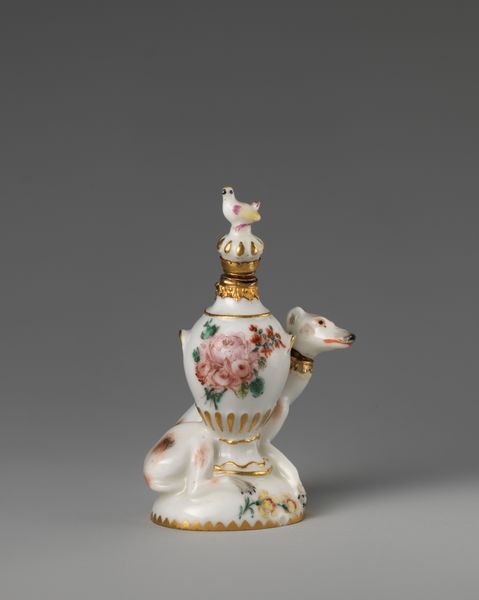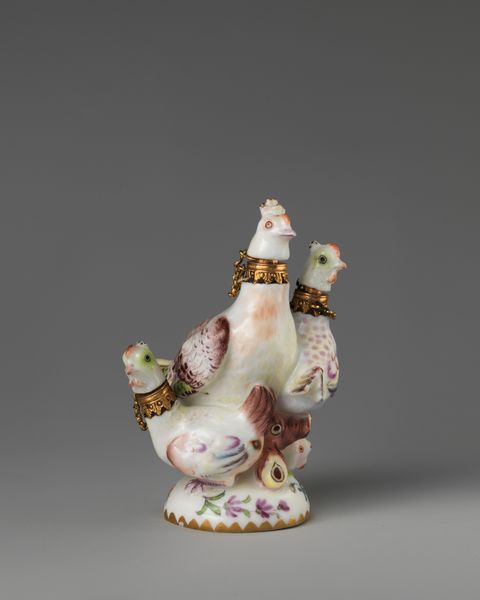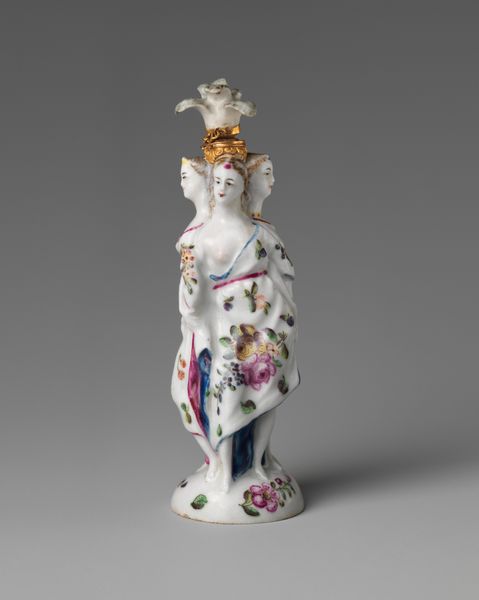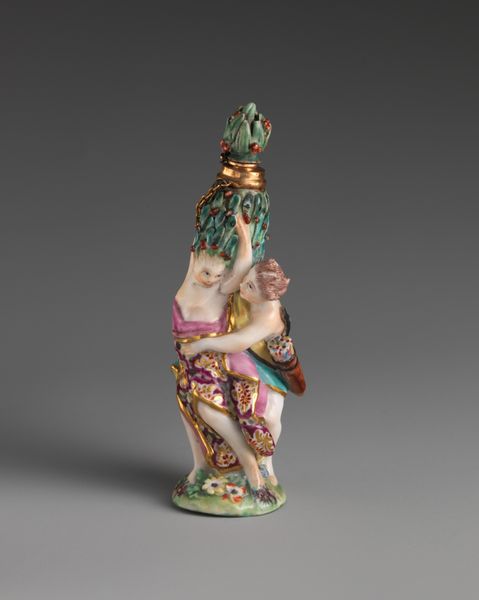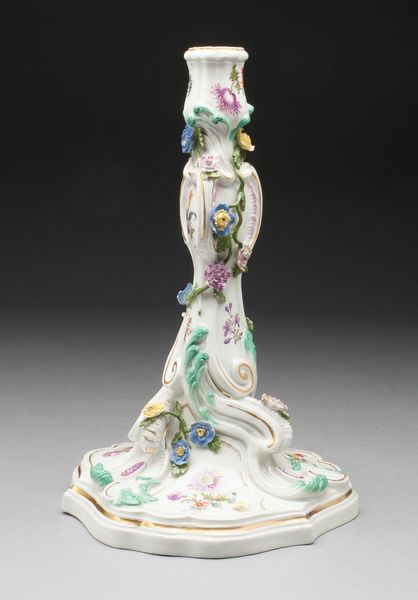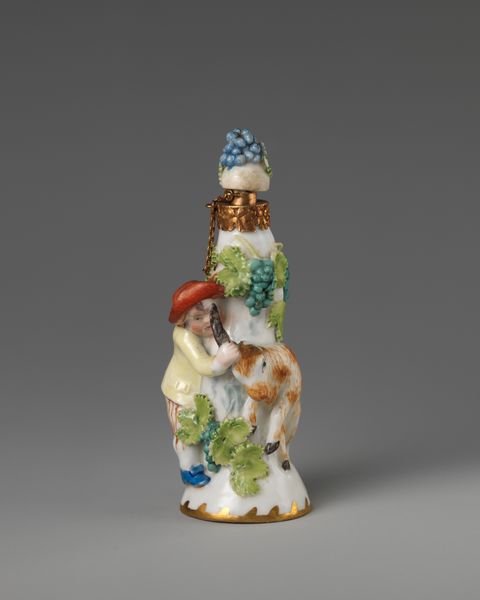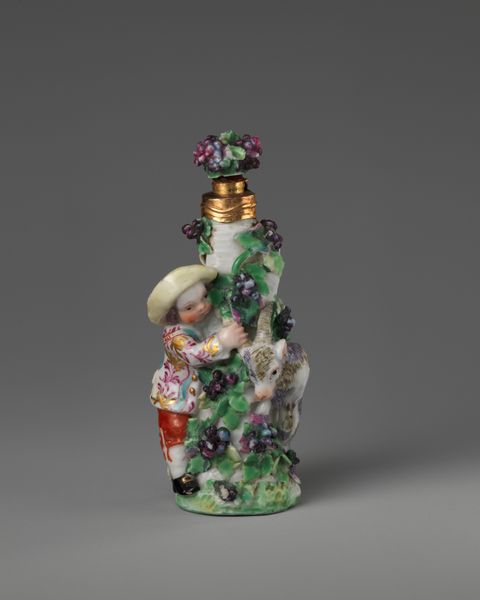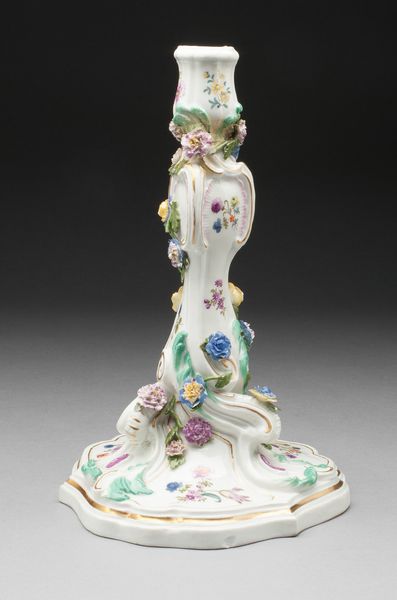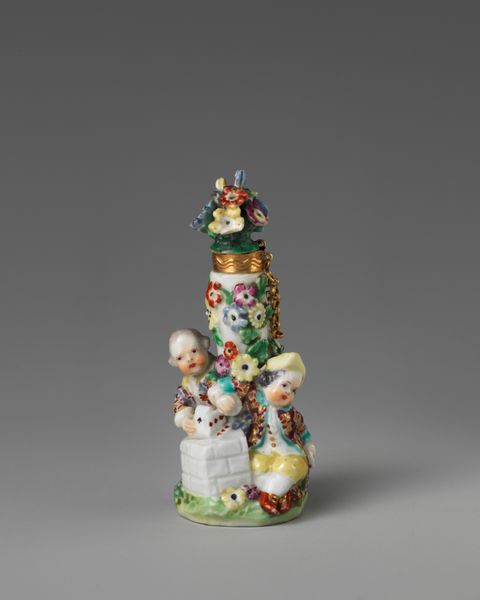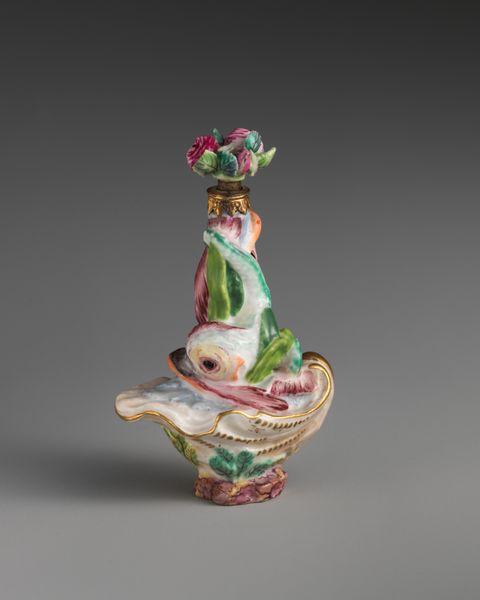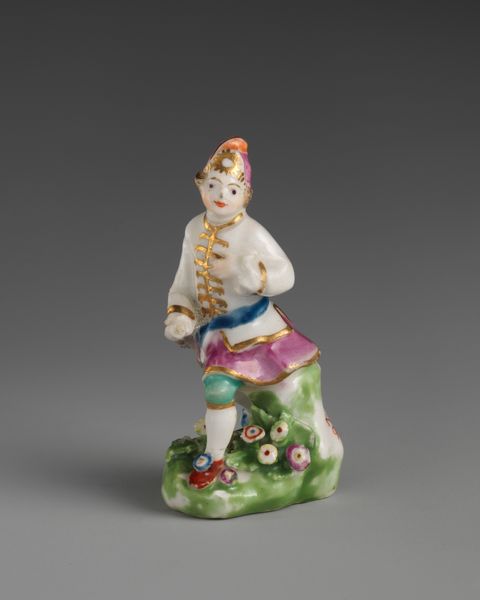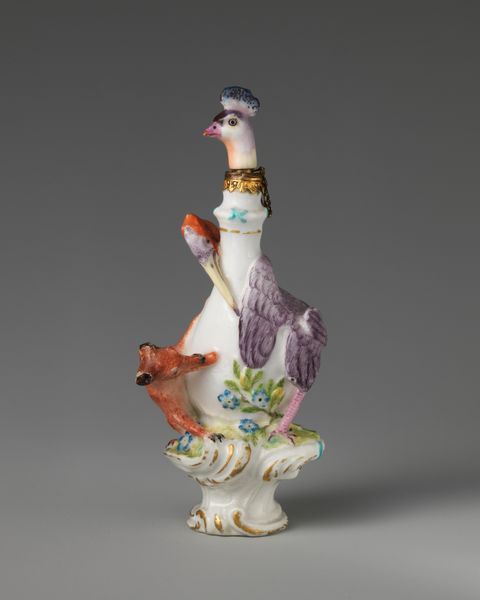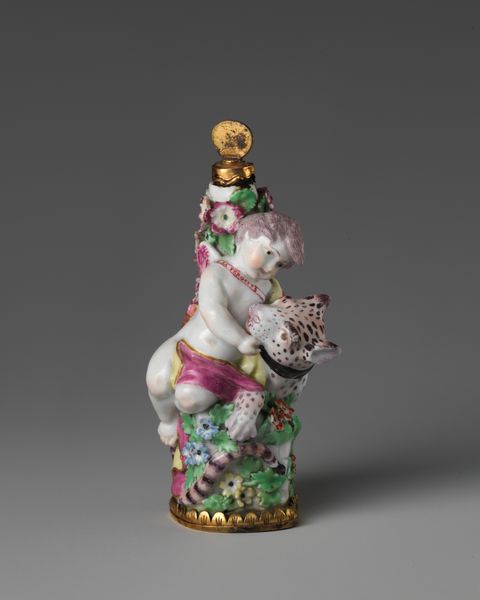
ceramic, porcelain, sculpture
#
ceramic
#
porcelain
#
figuration
#
sculpture
#
decorative-art
#
rococo
Dimensions: 3 1/2 × 1 5/8 in. (8.9 × 4.1 cm)
Copyright: Public Domain
Curator: I find this little porcelain sculpture absolutely delightful. It’s titled “Peacock,” and it comes to us from the Chelsea Porcelain Manufactory, crafted sometime between 1750 and 1760. What's your immediate take? Editor: It feels whimsical, almost cartoonish. The simplified form of the bird, the slightly naive rendering of the flowers...it’s a world away from realistic ornithological illustration. It practically vibrates with playfulness. Curator: Precisely. Let's consider the overall structure. The composition hinges on a strong vertical axis—the bird's erect posture, contrasted with the round base teeming with decorative relief elements. The glaze application appears quite smooth, yet note the discrete handling of the wing textures...a subtle detail against the vibrant, swirling forms on the base. Editor: Yes, and the peacock itself, traditionally a symbol of opulence and immortality, is made almost comical by that tuft of bright blue feathers and the odd collar it wears! It's as if the makers are playing with the idea of the peacock’s symbolism. Perhaps even satirizing it. Are we meant to find it silly? Curator: It's certainly a fascinating disruption of expectation. The gilding is strategically deployed. See the delicate scalloped edge around the base, anchoring the piece, and that curious necklace transforms the peacock's neck into a classical column fragment! Editor: And given the Rococo period's love for playful extravagance, this sculpture probably isn't so much ridiculing opulence as embodying it. Peacocks, during this period, signified pride, beauty and, by association, wealth. So adorning it with a somewhat awkward garland doesn't cheapen the original message. Curator: I concur. One can imagine this nestled amongst a collection of other such delicate pieces, each playing its own part in a grand decorative scheme. It is indeed rococo. The placement must affect its perception as a totality. Editor: This really challenges assumptions, though. Peacocks might denote vanity, sure. But here, that almost naive styling suggests a certain innocence, or a conscious removal from the strict courtly values it usually represents. I can appreciate that tension. Curator: Yes, in conclusion it’s that interplay – of form and symbol, of elegance and the artless—that render “Peacock” more complex than one might expect from a first, brief meeting.
Comments
No comments
Be the first to comment and join the conversation on the ultimate creative platform.
